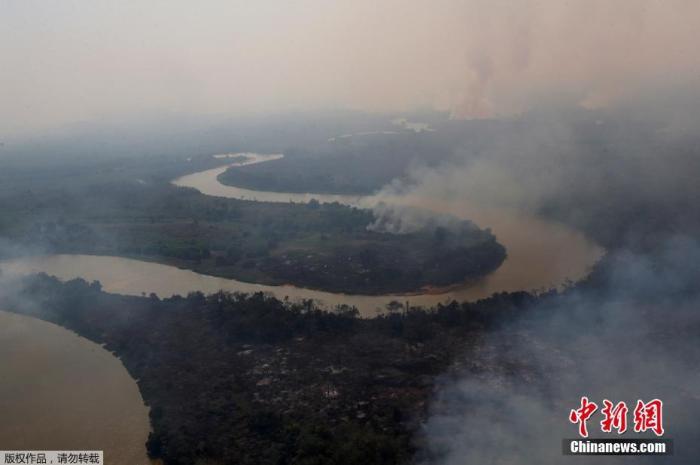China News Service, November 10th. According to Singapore’s Lianhe Zaobao, the Amazon rainforest is the most abundant place in the world with the most biodiversity, bred more than 3 million species.
However, the vicious circle of man-made deforestation, wildfires and climate change is causing serious damage to it and threatening the survival of plants and animals in the rainforest.
Amazon ecologist Berenguer pointed out that studies have shown that the temperature in the southeastern Amazon during the dry season has risen by 2.5 degrees Celsius over the past 40 years, which is even higher than the 1.5 degrees Celsius increase set in the Paris Agreement.
In the northeastern Amazon, rainfall at the peak of the dry season (August to October) was reduced by 34%.
"All of this means that if the climate is hotter and drier, there will be more fires in the forest. This is a horrible vicious circle."
On August 16, 2020, local time, the fire in the Amazon Rainforest Reserve south of Nova Preso, Pará State, Brazil continued, with thick smoke billowing.
Scientists worry that once the "critical point" is reached, the world's largest rainforest will die and become a savanna.
By that time, the animals and plants in the forest, including the jaguar that mainly grows there and the hobbit eagle that cannot forage outside the rainforest, will be endangered.
The Amazon rainforest accounts for one-third of the global rainforest. If it is destroyed, it will inevitably impact the nearby ecological environment.
Data map: The world's largest wetland, the Pantanal wetland in South America has a record fire, and the area of fire has reached one-tenth of the total area.
The Pantanal, south of the Amazon, is the largest tropical wetland in the world.
However, wildfires in 2020 destroyed 30% of its area and caused countless animal deaths or injuries.
Brazilian biologist Tortato pointed out that the destruction of the Pantanal is directly related to the destruction of the Amazon.
Data map: A jaguar in Goiás State, Brazil was injured in a fire in the Pantanal and received treatment.
The water vapor produced in the Amazon rainforest will be poured into most parts of South America. This phenomenon is called the "flying river".
Sometimes, the water volume of these "rivers" may be larger than the water volume of the Masun River itself.
However, as humans cut down large areas of rainforest, the amount of water that usually reaches the Pantanal through the "flying river" has decreased.
This resulted in the wetland becoming more drier and more frequent fires.

